Other pilings are covered with a lush carpet of snow-white metridium anemones. Still, other columns are covered on their upper portions with the green, aggregating anemones, and in the lower portions with red corynactis anemones. Just to add a little diversity, an occasional piling is relatively barren of growth except for a giant metridium anemone.
Among the anemones hide an assortment of invertebrates and fish. Large sheep crabs hang upside down waiting to pounce on some unsuspecting prey. Among the carpet of metridium is always found a small, red octopus or two, and there are numerous shrimp and hermit crabs scurrying among the pilings. Photographers should look for colorful nudibranchs, both up on the pilings and on the mud bottom.
The calm waters provide a nursery for many of the larger fish. I have never seen so many lingcod in one place, none over about 14 inches long and many under 10 inches. Noting that these are much smaller than the allowed minimum size, this is not a hunter’s paradise. It is, however, a pretty good spot for fish portraits. Other fish such as cabezon, various species of flatfish, kelpfish, and rays may be found here in miniature versions. This is a great spot for fish photography.
Wharf #2 is also where Monterey’s commercial fishing fleet discards its incidental catch (e.g., what they can’t sell). Fish packing houses on the wharf continue to dump their waste into the water, and in season you’ll find dead blue sharks, bat rays, and sea lions. This activity is legal and the fish carcasses feed a large population of sea stars.
People always seem to drop things in the water and this place is no exception. The bottom is littered with fishing supplies, wallets, purses, pocket knives, and old bottles. If you can drop it, you will find one here. Regardless, if you search for valuables, memorabilia from the past, or that award winning photo, everyone will find something under the wharf.
— Bruce Watkins, California Diving, October 12, 2000
Fishing Tips. The pelagic schooling species— Pacific sardine, Pacific mackerel (blue mackerel), jack mackerel (Spanish mackerel), and northern anchovy—are the most numerous fish taken from the wharf. Schools of each, in fact vast shoals at times, may move in and surround the wharf for a few days, weeks or even months throughout the year. Sometimes it’s one species, sometimes it’s a mixed group with the different schools maintaining their assemblage at different water depths, and it can be an amazing sight with the synchronized twisting and turning of the entire school when they’re under attack by one of the local sea wolves (sea lions). The sheer number of fish can be amazing.
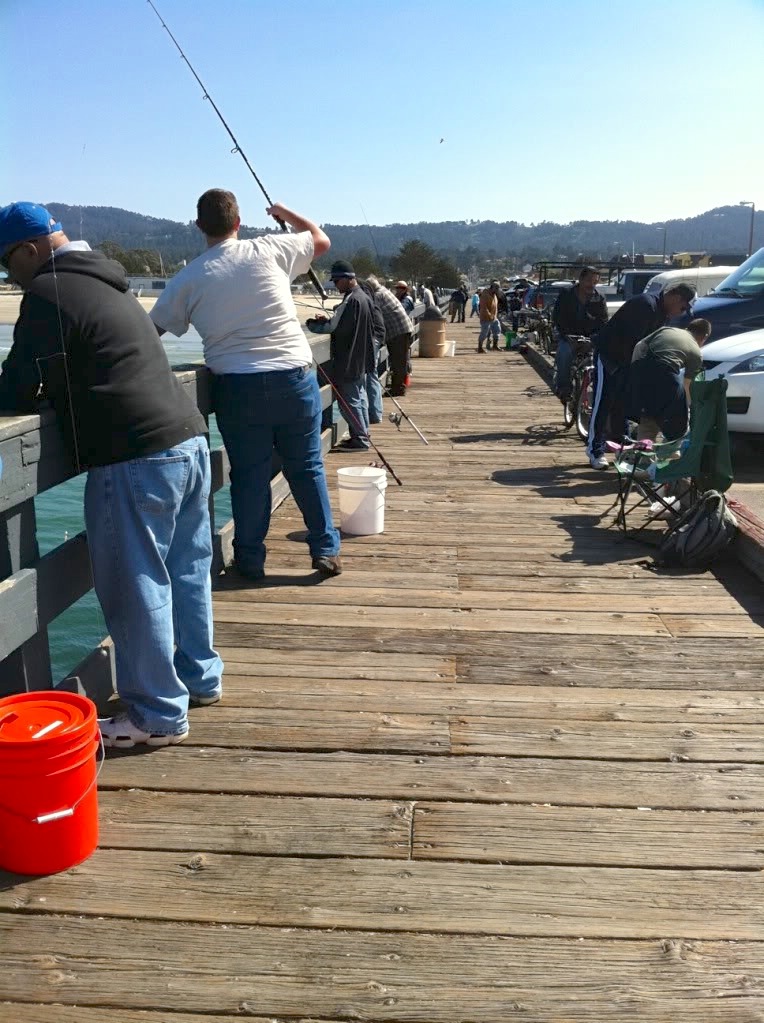
When the waters are filled with fish the railings will be filled with anglers and they’ll normally tote away buckets filled with fish. A person can literally catch several fish every cast until the arms wear out, and fifty to sixty fish an hour is easy. But even though none of these species has a take limit, don’t overdo it. If you’re looking to stock up on some bait or food it’s the time to go but make sure you’re going to use the fish you keep. Summertime into the fall months seems the best time to see these conditions.
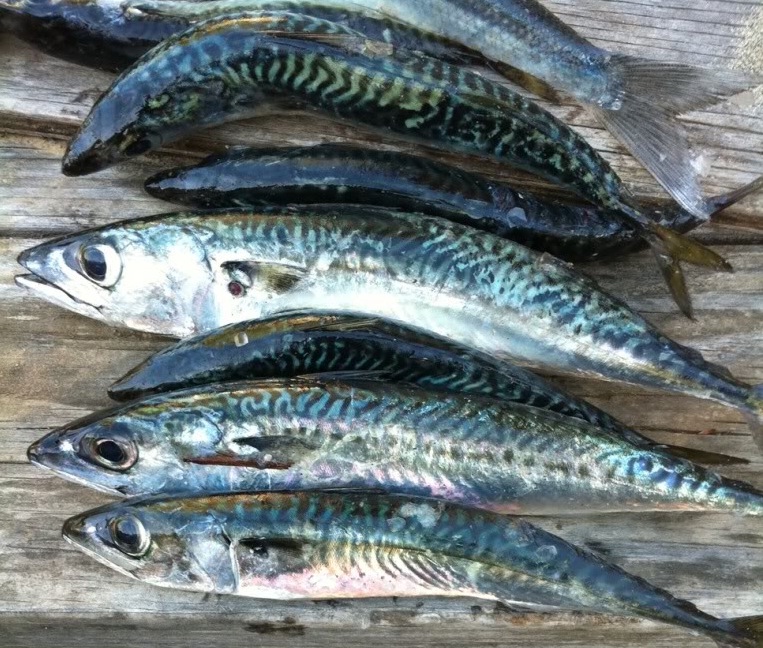
Pacific Mackerel taken in 2011
However, when the schools of pelagics are gone, anglers must depend upon the resident species and the fishing can slow. Surfperch will normally be the second highest number of fish taken. The numbers will be smaller but you can often find some type of perch much of the year. As a general rule, try winter to spring for the large barred and calico surfperch. Use pile worms, sand crabs, fresh mussels, or plastic grubs and fish in the shallow water near the beach end of the pier. Winter to spring may also see a starry flounder but for these flatfish fish on the bottom using cut anchovy or pile worms and fish slightly further out on the pier in a little deeper water.
Late spring to early fall will generally see a few California halibut being caught in the same mid-shallow area (and halibut to 44 pounds have been caught at the wharf). For these, the best bet is almost always live bait such as an anchovy, small shinerperch, or smelt—if you can get them. I have also heard a few reports of the larger flatties hitting on Scrounger-type lures and even on Hair Raisers, so don’t be afraid to give artificial lures a try. The same area can also offer up some tasty sand sole but for these, use a high/low rigging baited with pile worms, shrimp or cut anchovy or a Carolina-type rigging with the same baits. (And though divers report C-O turbot, most of the mid-size flatfish I have seen have been sand sole). By the way, the beach at the foot of the pier sometimes sees grunion visiting the shoreline during the summer. When the grunion run the halibut (and bat rays) often are right behind in the shallows. Target the flatties during such times.
Mid-pier to the end is the best area for the smaller surfperch and the pelagics. For walleye and silver surfperch, a small piece of anchovy or sea worm seems to work best when fished mid-depth using a size 6 hook. Jacksmelt, although often taken simply with bait rigs, sometimes prefer a baited hook and a leader made up of four to six size 8 hooks. Attach the hooks nine inches apart, bait each with a small piece of pile worm or shrimp, and fish the rig under a heavy bobber or float. The result is often several fish at a time.
As mentioned, many years see huge schools of Pacific mackerel, jack mackerel, Pacific sardine, or all three. Best bet for all of these is a multi-hook Sabiki/Lucky Lura-type leader with size 8, 6 or 4 hooks (size depending upon the species). Simply cast out and retrieve the leader or slowly work the leader up and down in the water after you have reached a mid-depth area. All three species (along with jacksmelt) seem to hit best at dawn and dusk but some days will see non-stop action all day long. The same rigging can be used for anchovies but use smaller hooks. Pacific herring will also occasionally make visits to the pier and can be taken with the same multi-hook bait rigs; most herring runs are in the late winter or spring months.
Somewhat common, although rarely in the numbers seen at other piers in Monterey Bay, are kingfish (white croaker). Most of these are taken on cut anchovies or pile worms fished on a high/low rigging; the best area to fish is mid-pier with a cast away from the pier.
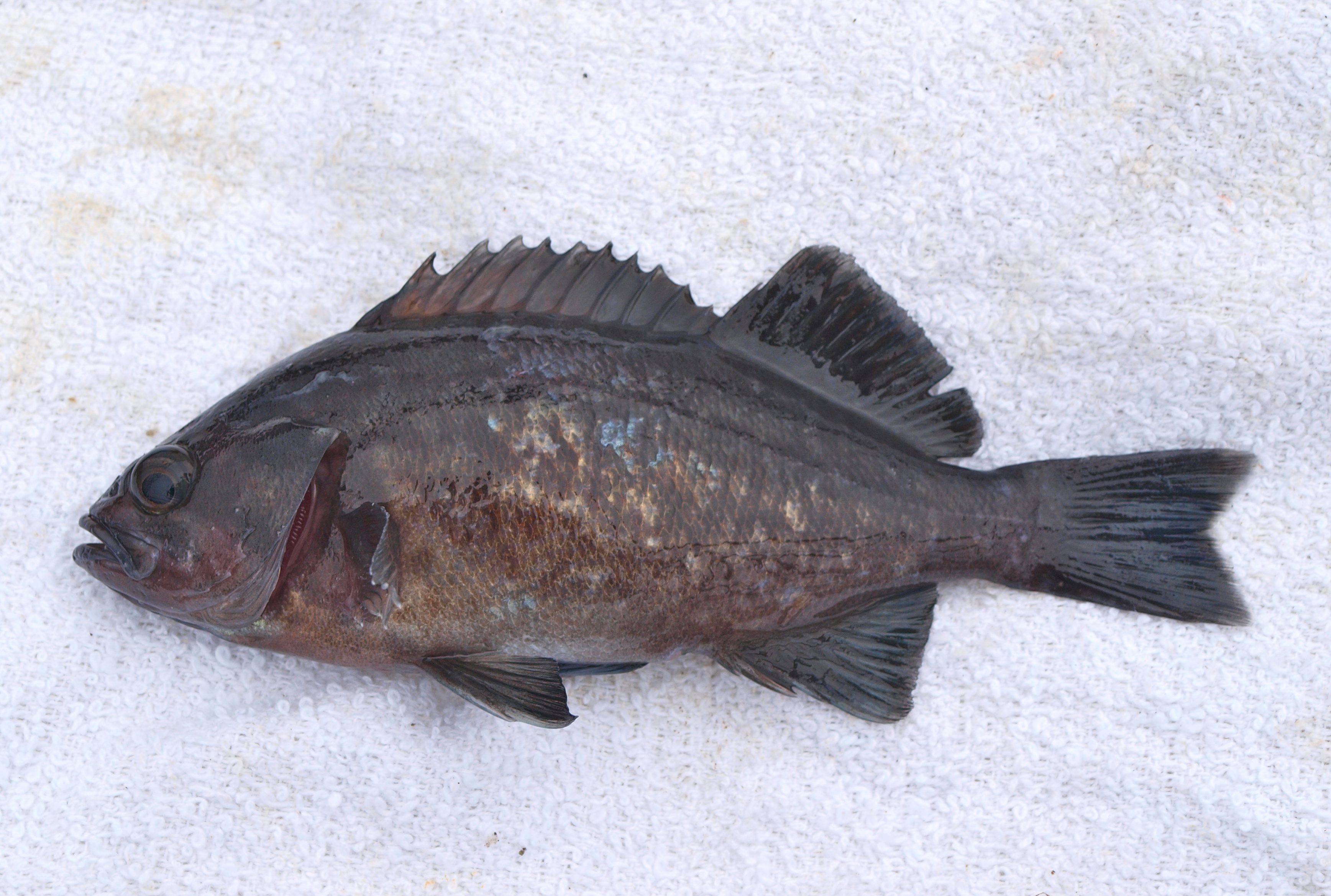
Blue rockfish
Summer and fall is the best time for small rockfish, and here the most common are small blue rockfish, brown rockfish, gopher rockfish and kelp rockfish. Fish for these under and around the pilings using pile worms and small hooks. At times, if the water is warm, you may also encounter some more southern species like blacksmith, garibaldi and kelp bass (calico bass), but they are not really common. However, another southern species, one that is often too common, is senorita. These pesky, cigar-shaped little wrasses will do their best to drive you crazy while stripping your hooks of bait (although you’ll catch an occasional careless fish). Unfortunately, when they’re present they are almost impossible to avoid.
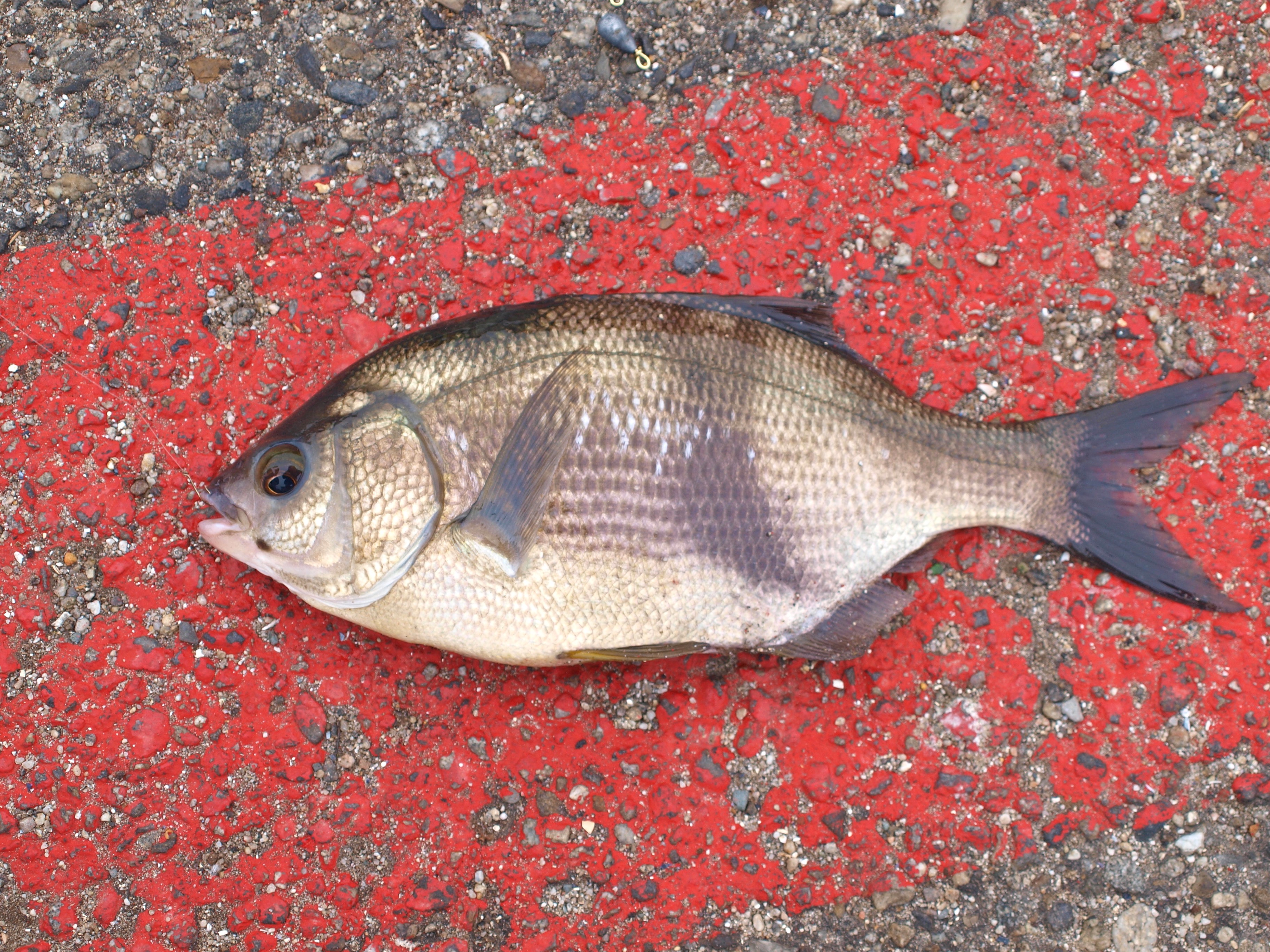
Pileperch
Fishing mid-depth around the pilings, using pile worms, fresh mussels or small (sidewinder) crabs is the best technique for the large pileperch and rubberlip seaperch. Each of these large perch is most prevalent during the winter to spring months but can show up throughout the year. Large rubberlips will also often fall for plastic grubs jigged up and down near the pilings; regulars say the root beer colored and oil colored grubs work best. Fishing on the bottom near the pilings with pile worms, fresh mussels, or small pieces of market shrimp will yield rainbow seaperch, blackperch and striped seaperch. Typically these are most common in the spring months although all may be encountered almost any month of the year.
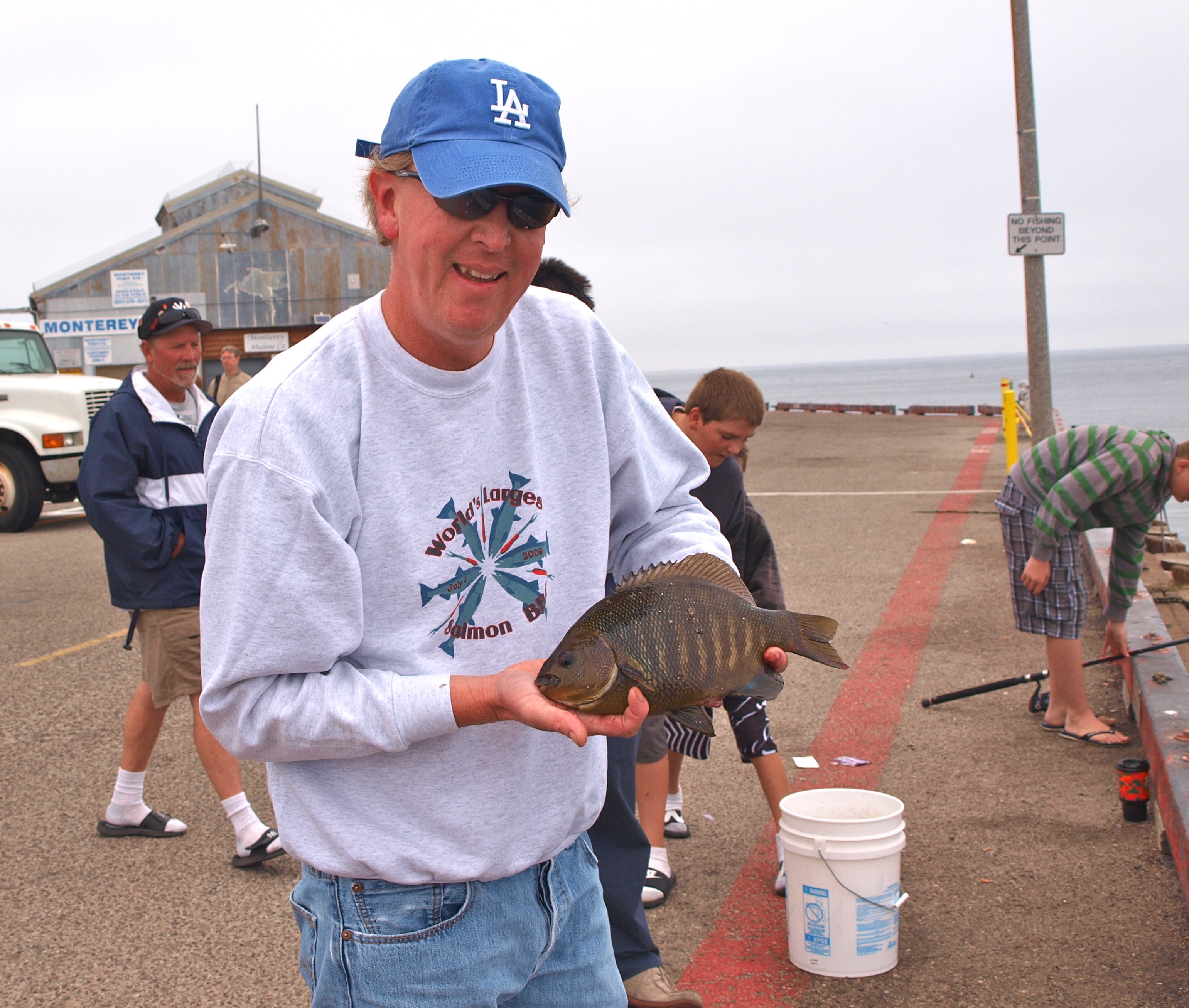
Blackperch caught by Madsteelhead in 2013
Another perch caught here is the sharpnose seaperch, a perch common only to Monterey Bay and a fish normally found in deeper water. These perch are present in some number almost every year, but occasionally the pier will see large runs of the fish, most often in June and July. Although numerous, they can be difficult to catch. Regulars tend to use rigging that consists of a size 6 or 8 hook at the end of the light line, a splitshot sinker about two to three feet up from the hook, and a tiny bobber that keeps the hook only a few feet beneath the surface of the water. The line is watched closely and, when the bobber is submerged, a quick jerk is made to hopefully hook the perch.
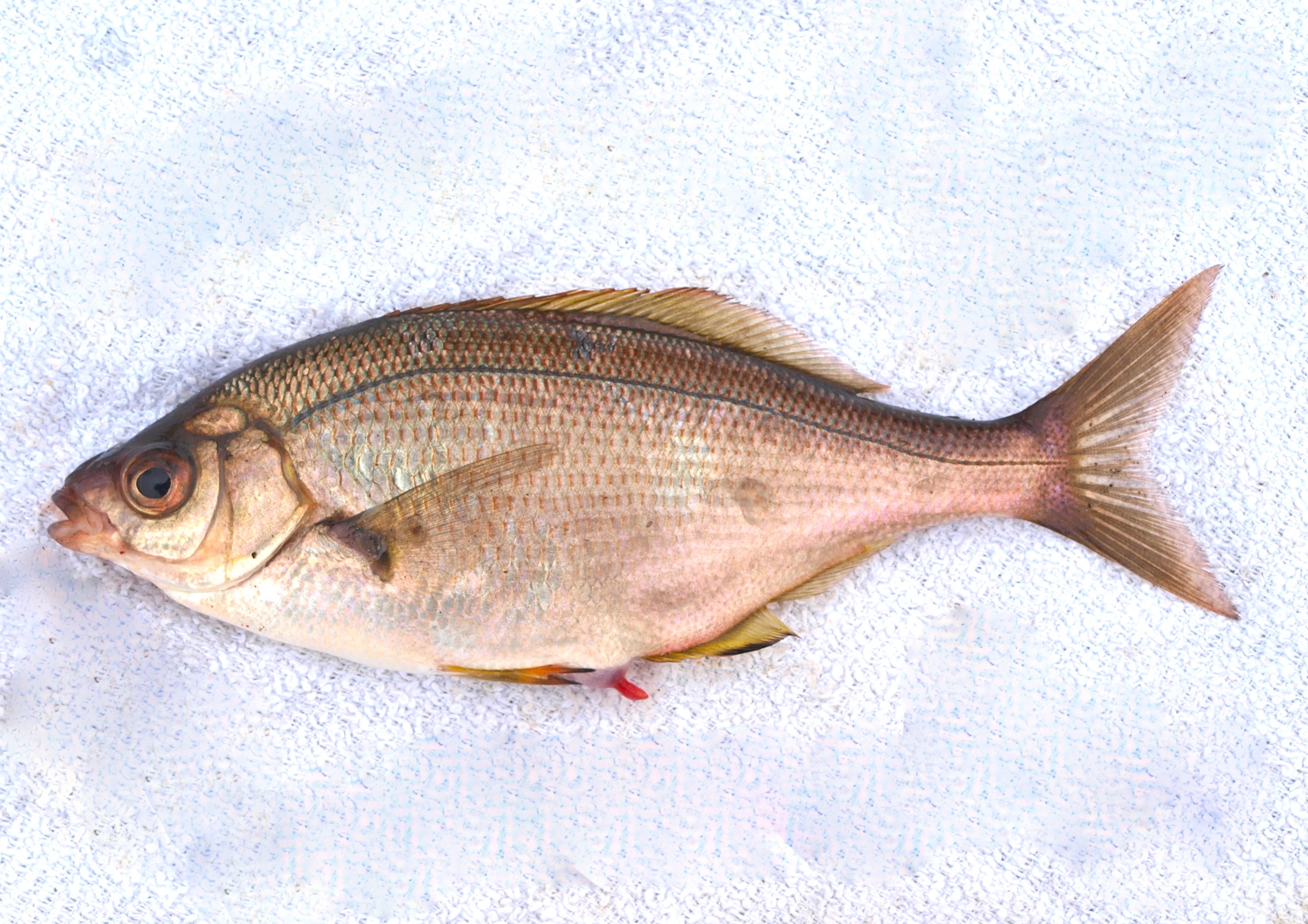
Sharpness Seaperch
A fish that is sometimes found in unbelievable numbers, especially during the summer, is that little ol’ dab—the speckled sanddab. If you mistakenly let a line rigged with small hooks (such as a multi-hook bait rig) rest on the bottom, a dab may show up on every hook. Unfortunately, these sanddab are big enough to grab your bait but really too small to eat. Most days would probably yield hundreds of these small fish if anglers fished for them but we’re talking tiny sanddabs here, each 3-6 inches long and useful only as an attractant for larger fish. I have tried them as bait but with little success to date. The good news is that sometimes the larger Pacific sanddab may also show up. If they do, you’ll often catch 2-3 at a time and you’ve got some good eatin’ available to you.
A trio of prized sport fish, also visit the pier. Most years will see some king salmon caught during the late summer to fall months (but primarily in the fall). The majority of the kings will fall to lures (especially 5/8 or 3/4 oz Krocodile lures with silver/blue prism colors) while a lesser number will be landed on whole frozen anchovies fished under a bobber. Regulars report that the salmon prefer the early evening hours.
Most years will also see a few striped bass taken from the wharf, again during the summer months. Most of the stripers are taken using lures (such as Hair Raisers) or while fishing on the bottom with live bait (small perch or smelt) or cut bait (sardines or anchovies).
Early winter (November) will often see casters trying for small steelhead along the inshore section of the wharf. Various jigs and spoons seem to be the preferred method for the 16-22 inch fish, but I would think worms might also work. There has been a problem with people snagging salmon and to a lesser degree the other fish and the city has tried to respond with some reasonable rules as seen in the following:
New Rules For Fishing Off Wharf II
For the last couple of falls when the salmon are present off of Wharf 2, there has been a frenzy of people casting overhead and standing on the railing trying to catch or snag one of these fish. Overhead casting and the jerking motion associated with trying to snag the fish, all while standing on the railing, presents dangers to anyone walking or driving behind these activities. There have been, in fact, several serious injuries directly related to this, and numerous broken car windows and dented car hoods from sinkers and hooks being cast backward. Therefore the City Council has made it illegal to stand on the railing while fishing off of Wharf 2., as well as making it illegal to overhead cast.
—The Newsletter of the City of Monterey Waterfront, October 2003
A less common fish, although one that grows to fairly good size, is wolf eels, and an occasional one will be landed by anglers fishing down around the pilings. My bias is showing here but I recommend letting them go. They’re neat little (and large) creatures.
A very unusual fish for the area, one that is rarely seen today, although occasionally seen in the late 1800s, is yellowtail; one was caught in 2012.
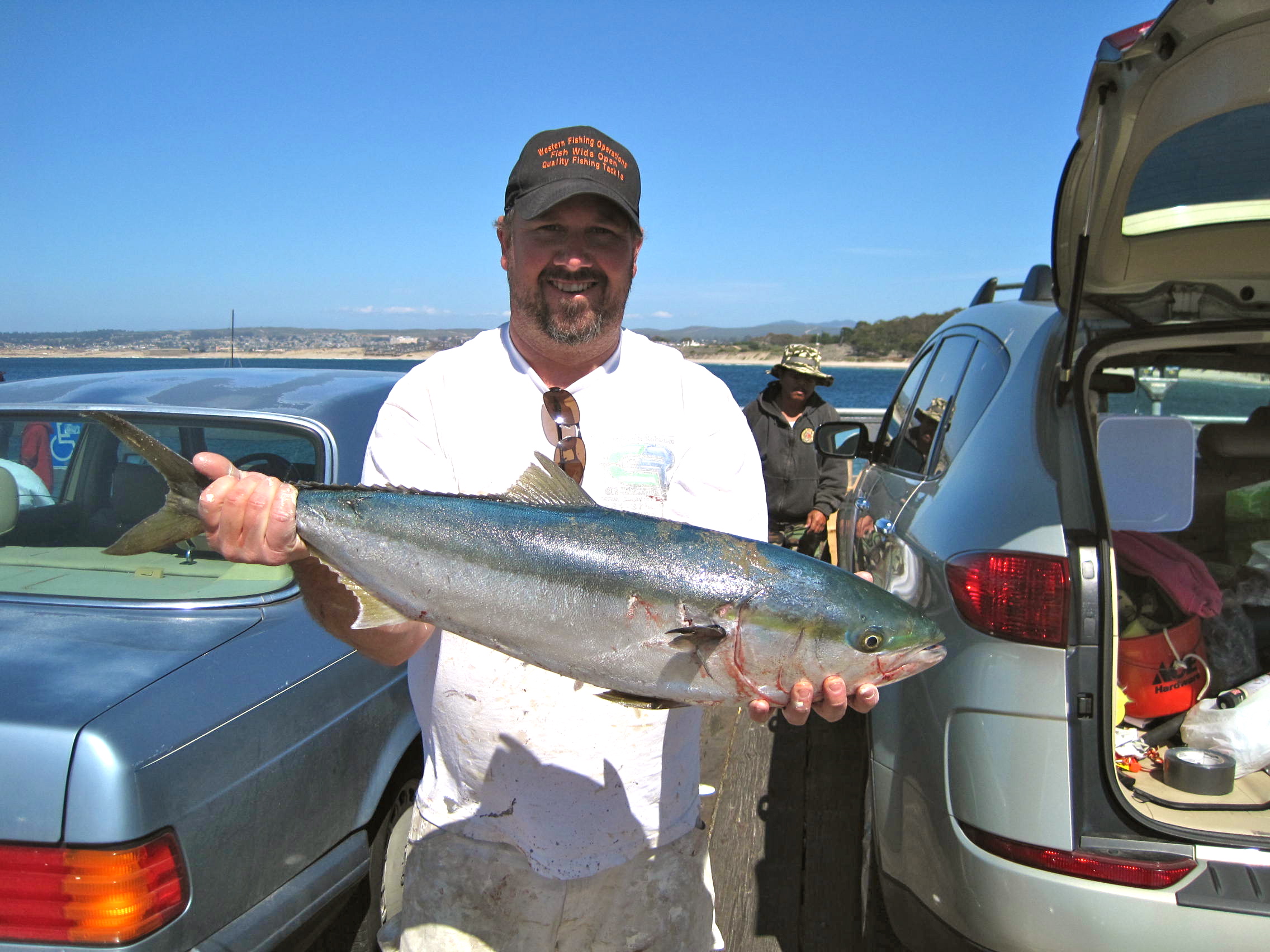
Yellowtail taken in 2012
Although the pier is not really noted as a good pier for sharays (sharks and rays), it can be, at times, fairly good for bat rays (especially in the fall). Most of these large rays are taken at night while using squid as bait. Be sure to bring a stout rope and a good-sized net if you’re after these powerful fighters. And, say a prayer—it isn’t easy keeping them away from the pilings, the kelp, and the flotsam and jetsam that sometimes litters the water. Lesser numbers of other sharks and rays are taken—leopard sharks, smoothhounds, and a few thornback rays. At least one angel shark was also reported from the wharf (1999).
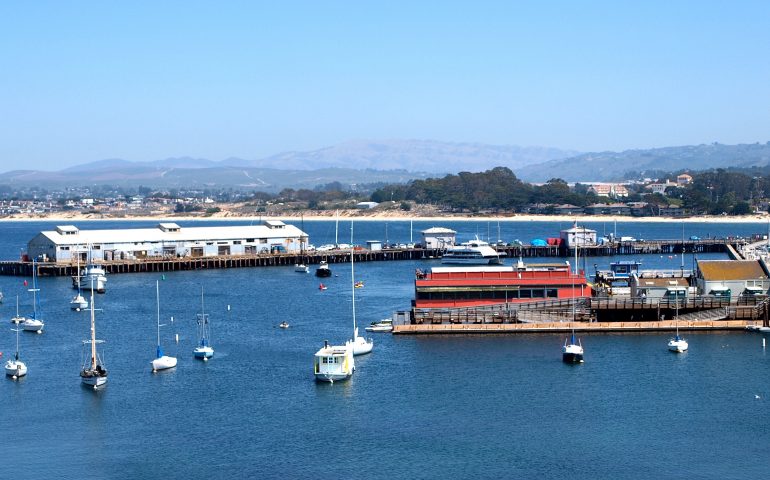
[…] The floating docks of Monterey Harbor and the pilings beneath Municipal Wharf II provide a rich and diverse community created largely by human activity. via […]